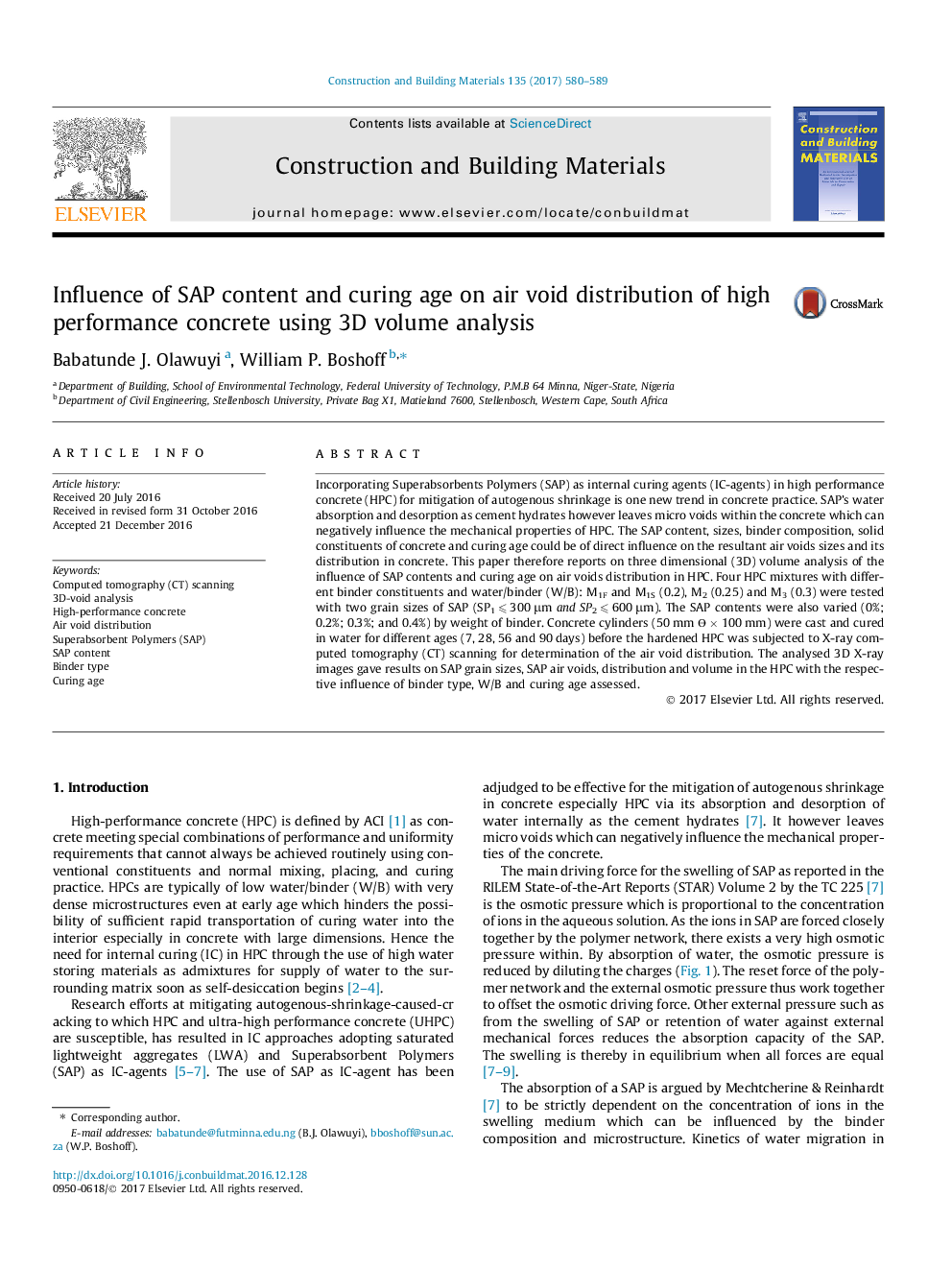| Article ID | Journal | Published Year | Pages | File Type |
|---|---|---|---|---|
| 4913594 | Construction and Building Materials | 2017 | 10 Pages |
Abstract
Incorporating Superabsorbents Polymers (SAP) as internal curing agents (IC-agents) in high performance concrete (HPC) for mitigation of autogenous shrinkage is one new trend in concrete practice. SAP's water absorption and desorption as cement hydrates however leaves micro voids within the concrete which can negatively influence the mechanical properties of HPC. The SAP content, sizes, binder composition, solid constituents of concrete and curing age could be of direct influence on the resultant air voids sizes and its distribution in concrete. This paper therefore reports on three dimensional (3D) volume analysis of the influence of SAP contents and curing age on air voids distribution in HPC. Four HPC mixtures with different binder constituents and water/binder (W/B): M1F and M1S (0.2), M2 (0.25) and M3 (0.3) were tested with two grain sizes of SAP (SP1 ⩽ 300 μm and SP2 ⩽ 600 μm). The SAP contents were also varied (0%; 0.2%; 0.3%; and 0.4%) by weight of binder. Concrete cylinders (50 mm ϴ à100 mm) were cast and cured in water for different ages (7, 28, 56 and 90 days) before the hardened HPC was subjected to X-ray computed tomography (CT) scanning for determination of the air void distribution. The analysed 3D X-ray images gave results on SAP grain sizes, SAP air voids, distribution and volume in the HPC with the respective influence of binder type, W/B and curing age assessed.
Keywords
Related Topics
Physical Sciences and Engineering
Engineering
Civil and Structural Engineering
Authors
Babatunde J. Olawuyi, William P. Boshoff,
